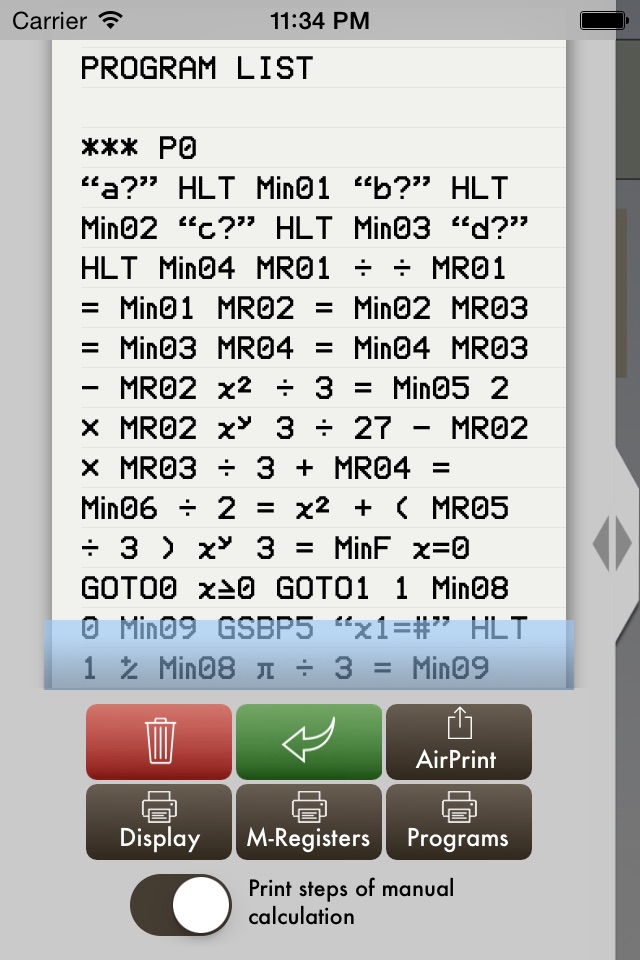
FX-602P Sim app for iPhone and iPad
Developer: Wulf Becker
First release : 16 Mar 2012
App size: 11.94 Mb
FX-602P Sim is a simulation of the favorite programmable scientific calculator FX-602P, which was produced in the past by a well-known Japanese manufacturer.
Its specialty: It is easy to program based on algebraic notation and not RPN. The documented functions and programming-features work like those of the original calculator.
As oppose to the original device the default programming memory of FX-602P Sim is not limited to 512 steps. It has been extended to 999 steps. The default number of registers has been increased from 22 to 110 ("Mode ." is not longer needed).
This calculator is not only for engineers and scientists: Whenever you have to do repeated typing of tedious calculation sequences, you can make your life easer by programming them. There are detailed pdf-manuals in various languages easy to find in the internet (keywords: fx-602p manual pdf).
Special registers in FX-602P Sim are M96 to M99. If enabled for date and time, they are read only and provide the local date and time down to the second.
Registers M87 to M95 can contain location service parameter like i.e. latitude, longitude and altitude if they are enabled.
Programs and data content remain persistent in IOS-devices memory.
New functions
● Save and Load-functions of the cassette interface FA-2 (FA-1) are now implemented. Calculator programs and registers can be stored in files and retrieved from files. The file format is compatible with the FX-602P simulator for other smart-phones, so that programs can run on both simulation platforms.
● Preview of saved calculator files like program listing.
● Dropbox-Implementation to synchronize the internal calculator-files with the Dropbox filesystem.
Basic operations
● × ÷ + - () (Judging priority of operation)
● 33 parentheses levels
● Calculation with constants
● 110 registers for numbers, M00 to M99 and M0F bis M9F (nonvolatile), M99 readonly with local time
● Indirect adressing of registers
● Range of numbers ±1 × 10^-99 to ±9.999999999 × 10^99
Scientific functions
● sin, cos, tan, sinh, cosh, tanh and inverse functions
● log10, logn, e^x, 10^x,
● Square root, square, 1/x, x!, x^y, x^(1/y), %
● Random number, INT (integer), FRAC (fraction part of a number), rounding
● Transformation between polar and rectangular coordinates
● Transformation between decimal format and degree, minutes, seconds
● Statistical functions: mean, sum, square sum, standard deviation (n, n-1)
Programming features
● 10 program keys for up to 10 programs
● 999 programming steps (nonvolatile)
● Unconditional jump (GOTO) up to 10 jump labels for each program level
● Indirect jumps
● Conditional jumps (x=0, x≥0, x=F, x≥F)
● Count jumps (DSZ, ISZ)
● Subroutines, up to 10 levels
● Indirect call of subroutines
● Single step mode for debugging
● Edit mode



